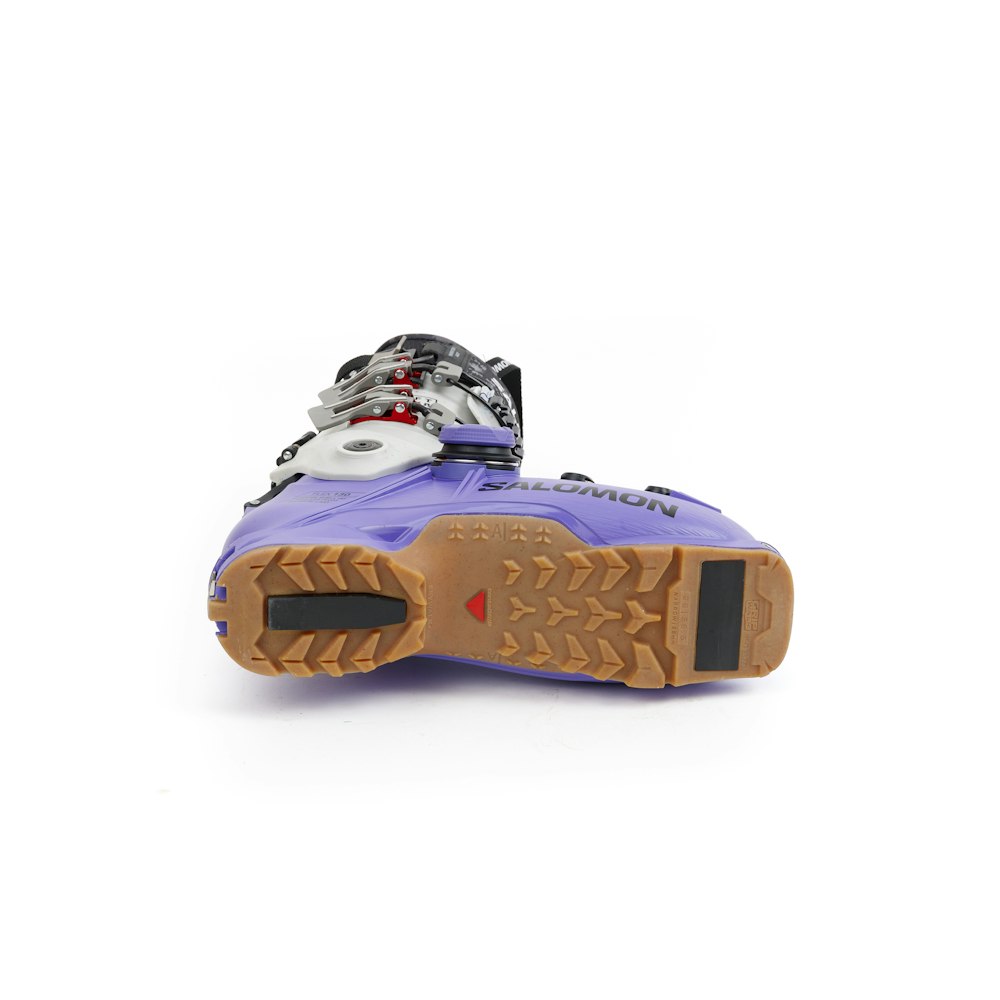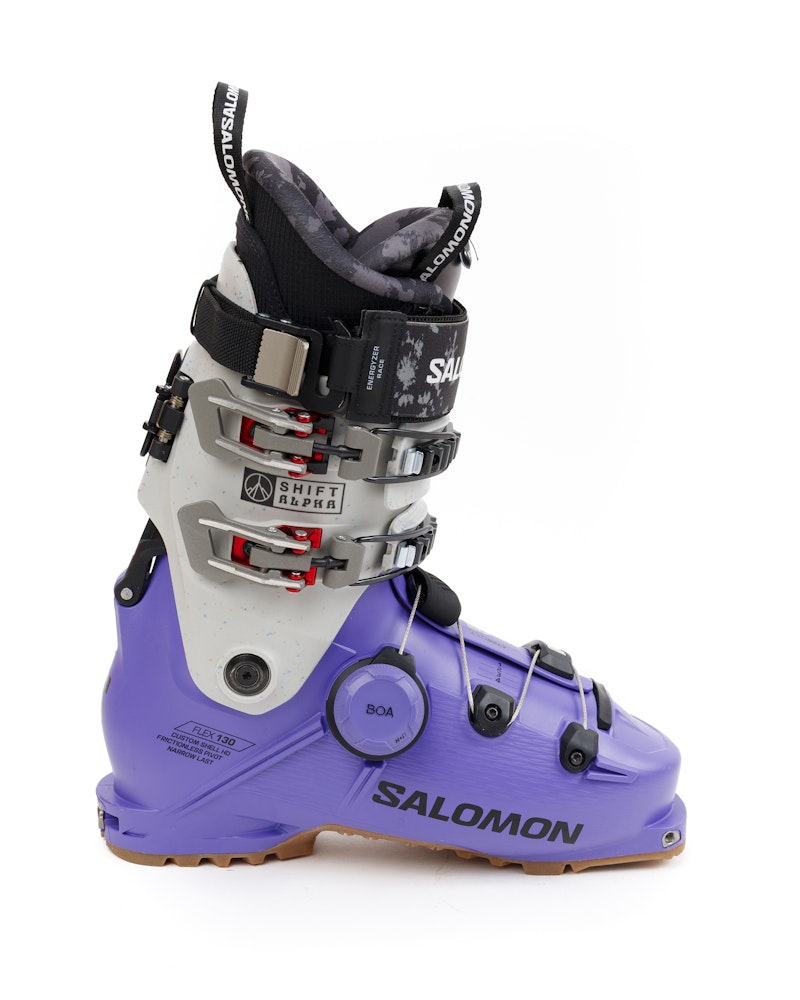- Buyer’s Guide reviews
- In words
- Technical specifications
Buyer’s Guide reviews
The charts show our impressions from testing
Product info
Category average
In words
Intro
Completely overhauled from last season with an eye-catching bright purple design, this model is now only available in the BOA version. As an alternative to the Shift Alpha, there is the Supra model, which features a more forgiving 100 millimeters width. The granddaddy of their free lineup, it combines the best features of the Shift Pro and S/Lab to deliver natural, friction-free hiking, and first-rate balance between uphill and downhill performance.

Walking
Easy entry and exit: the well-thought-out internal volumes feel immediately comfortable for narrow feet, while the very roomy toe box barely touches the toes. Range of motion in hike mode is among the best in its class, the ski/walk lever is very user-friendly and easy to operate with gloved hands. Natural, frictionless walking action, with good sensitivity for tackling climbing sections—all features that make this more akin to a touring boot than a freeride.
Lab
BOA shell closure with interesting cabling around the medial malleolus for snugger wrap at the instep and heel retention. Two super-attractive pink micro-adjustable buckles on the recycled polyolefin cuff, solid multi-layer elastic quick-release booster. Thermoformable liner, well finished, with protection to stop snow entry, reinforced tongue, gusset on the Achilles tendon and the option to add in laces.
Skiing
If it skied as well as it hikes, this would be at the top of the rankings. Unfortunately it's rather docile in descent, which will appeal to a wider range of users, but demanding riders will find it underwhelming. A little fore-aft play could be a concern at high speeds and when performing off-balance moves on fat skis; very progressive forward flex thanks to the excellent work of the booster but still rather soft for a 130. Fairly precise and not overly aggressive edge hold, with good sensitivity with skis up to 110 millimeters. Technically strong skiers, good choice for ex ski tourers.
Technical specifications
LINER MATERIALS
polyolefin
SHELL MATERIALS
PU
INSERT TYPE
pin-tech
Buckle description
a lower boa and two buckles on the upper cuff + 50 mm claw hook
Sole description
Contagrip GripWalk
Liner description
My CustomFit Freeride 4D Race
Thermal value
A
No. of buckles
3
Lean forward
13.5°
Available sizes
22.5–29.5 mp
Released in
2024
Made in
Romania
Price
800 €
Declared specsMeasured by us
We measured the measure 26.5 to get all the details
1.800 g
Individual weight
XXXXX
N/A
Liner weight
XXXXX
N/A
Shell weight
XXXXX
304 mm
External shell length
XXXXX
N/A
External shell width
XXXXX
N/A
Inner shell width
XXXXX
N/A
Pin distance
XXXXX
N/A
Force to 20° back
XXXXX
N/A
Force to 20° forward
XXXXX
55 °
Cuff ROM
XXXXX
N/A
Maximum cuff height
XXXXX
N/A
Maximum tongue height
XXXXX
N/A
Maximum forefoot width
XXXXX
N/A
Maximum ankle width
XXXXX
N/A
Sole thickness at toe
XXXXX
98 mm
Min. last width
XXXXX
104 mm
Max. last width
XXXXX
Top stories
Recommended pairing
Recommended setup
Similar products


